Call Us:+975-17885658
Email Us:info@dheywangbhutan.btdheywangbhutan@gmail.com
Bhutan East to West
BHUTAN EAST TO WEST [15 Nights/16 Days]
This cultural-tour can be juxtaposed to Bhutan’s most challenging trekking route, the Snow Man Trek in the high Himalayas, as it traverses for 16 days from Western Bhutan to the East, offering you glimpses of the historical and cultural bastions of the Kingdom Providing a very comprehensive picture of the Kingdom, it will take you intro the different regions of Bhutan, diverse in ethnicity, way of life and dialects. Another catch of this trip is the immeasurable natural beauty and a plethora of flora and fauna along the way.
Guwahati (India- Samdrup Jongkhar), Trashigang: Khaling Blind school, Trashigang Dzong, Merak-Sakteng, Ranjung Woesel Chholing Monastery, Rangjung town.
Trashiyangtse: Gom Kora temple, Chorten Kora. Mongar : Drametse monastery, Mongardzong, yaggangLhakhang.
Lhuntse: Lhuntse Dzong. Bumthang : JambayLhakhang, Chakhar Lhakhang, Kurjey Lhakhang, Tamshing Lhakhang, Jakar Dzong, Chummy village.
Wangduephodrang: Phobjikha. Punakha : Chhimi Lhakhang, Punakha Dzong, Khuruthang town.
Thimphu: Buddha Point/ Kuensel Phodrang, Memorial Chorten,
Tashichho Dzong, Changangkha Lhakhang, Motithang Takin Preserve, Traditional Medicine Institute, Folk Heritage Museum, National Institute for Zorig Chusum, Dochula pass.
Paro: Rinpung Dzong, Taktsang (Tiger nest).
Day 1

Gawahati, India- Samdrupjongkha
On the arrival you will be greeted by the representative of Login Bhutan. Drive to the Samdrup Jongkhar, South-eastern part of Bhutan bordering the Indian states of Assam and Arunachal Pradesh. Overnight in hotel.
Day 2
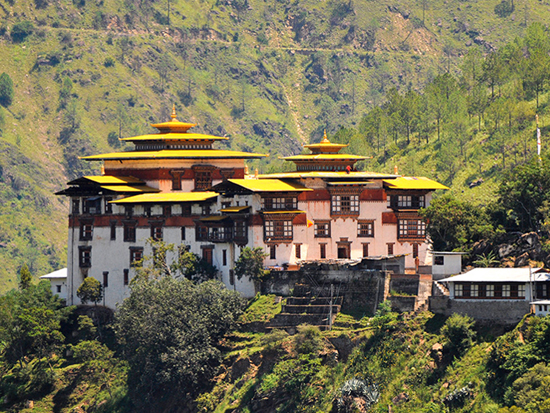
Samdrup Jongkhar-Trashigang
After breakfast drive to Tashigang, passing through several villages. En-route visit hand loom (weaving center) in Khaling and then visit blind School. Continue drive to Tashigang, Vividly colored handloom cloth and end silk spun from cocoons bred from castor oils plants are local specialties. The dominant language of the region is Sharchop instead of Dzongkha. Trashigang is used as the market place for the hill people from Merak & Sakteng, who are known for their exceptional features and for their costume made of Sheep skin and Yak wool. The hat they wear is unusual but has a significance of its own. We might be able to meet a few of these people. Visit Trashigang Dzong which stands on the hill slope below the main street. The Dzong built in the mid-17th century, serves as the administrative seat for the district, as well as school of Trashigang Dzong or the monk. Overnight at hotel.
Day 3
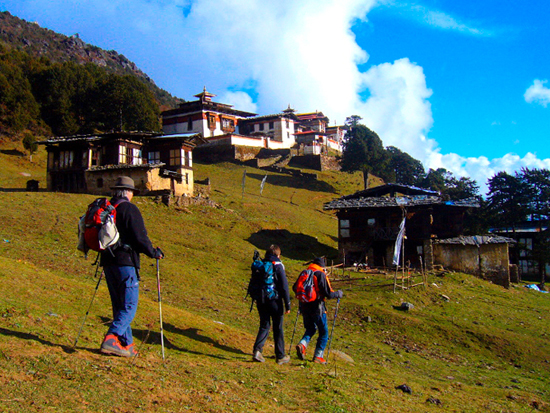
Trashigang-Merak
After breakfast drive up to Jigmeling approximately 3 and half hour. The hike up to Merak village takes 1 hour. Lunch at Merak . In the afternoon visit Merak village and mingle with the locals. Evening dine with the people of Merak followed by native dances of Merak and Sakteng – Achulamoa Cham and folk dances which is worth witnessing. Overnight at local guest house.
Day 4
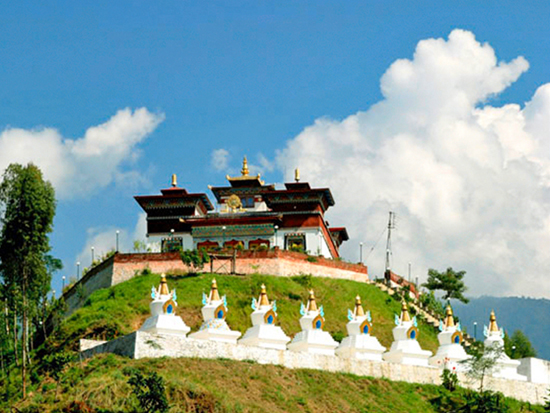
Merak-Rangjung
On the way back visit Phongme village and drive to Radhi for lunch. After lunch drive to Rangjung and visit Rangjung Woesel Chholing Monastery-this was founded by Garab Rinpochhe in 1990. Evening stroll around Rangjung town. Overnight at hotel.
Day 5
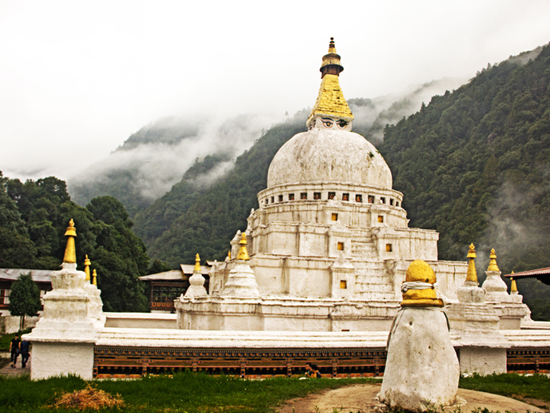
Rangjung-Trashiyangtse-Trashigang
Early in the morning drive to Tashiyangtse and on the way we can visit GomKora temple and continue drive to Yangtse. The main attractions in this valley, is a great stupa, ChortenKora built in 1940 and modeled on the style of the Boudhnathstupa in Nepal. After lunch visit the Trashiyangtse town is small but very beautiful with traditional designs and colors of the houses. This place is also famous for wooden products like dapa (wooden plate), phob (cup) and others. One of the traditional painting schools is located in Tashiyangtse. Drive back to Tashigang. Overnight at hotel.
Day 6
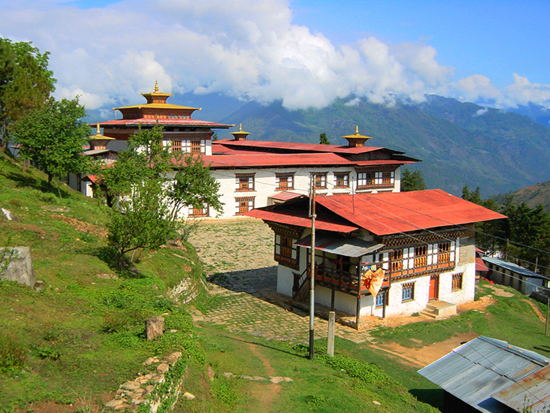
Trashigang-Mongar
After breakfast drive to Mongar. En route stop to visit Drametse monastery- founded by Ani Choten Zangmo, Pema Lingpa’s granddaughter, who fled from Bumthang to escape a proposal of marriage from the local king. She fled east and when she found a place ideally suited for meditation and practice she named it Drametse which literally means the peak where there are no enemies. Ani ChoetenZangmo kudung (remains) is preserved to this day in the monastery as the most important relic. Continue drive to Monger. After lunch visit Mongar dzong which is built in keeping with traditional by not using any drawings or nails and then visit Yaggang Lhakhang . Overnight at hotel.
Day 7
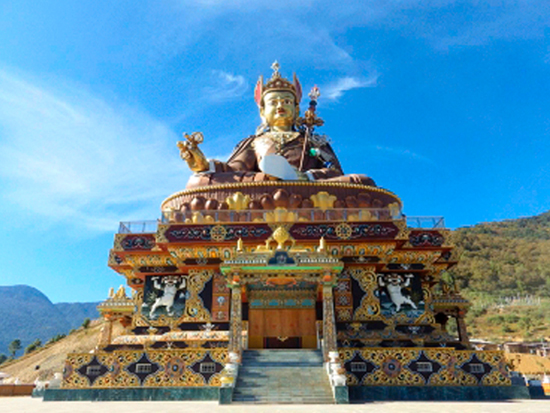
Mongar-Lhuentse-Mongar
After early breakfast drive to Lhuntse. The steepness of the region lends itself to some spectacular views, with rushing waterfalls and sheer drops. Lhuntse district is one of the most rural and isolated districts in Bhutan. The landscape is spectacular with stark cliffs and gorges, beautiful conifer and pine forests, and remote villages. The Kurtoe region of Lhuntse is the ancestral home of Bhutan’s Royal family. And also consider being the best for KishuTharatestiles. Visit Lhuntse Dzong and weaving village. Drive back to Mongar. Overnight at hotel.Trekking begins with 6 hour, 12 km walk between Bumthang and Ngang Lhakang, at a maximum altitude of about 2900m.
Day 8
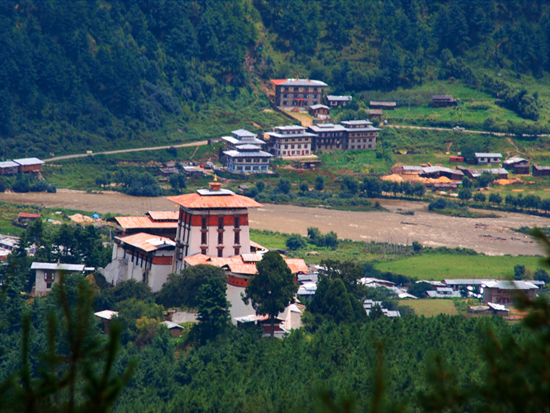
Mongar-Bumthang
After breakfastdrive to Bumthang and you would notice a change in the weather condition and that the place becomes cooler. Stop at Sengor where you would get to see the locals there. On the way there are a few places where we will stop. After reaching Bumthang we can go to the small town and mingle with the locals there. Overnight in hotel.
Day 9
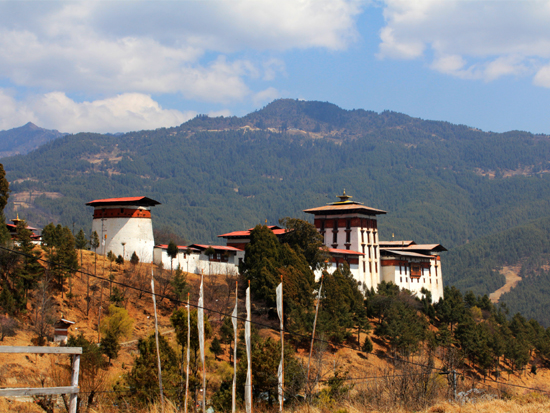
Bumthang-Halt
Whole day sightseeing.
- Jambay Lhakhang: Is a sacred monastery built in the 7th century by the Tibetan king, Songtsen-Gampo. It is one of the 108 monasteries built by him to subdue evil spirits in the Himalayan region.
- Chakhar Lhakhang: Besides the main road, a short distance beyond Jambay Temple is Chamkhar (Iron Castle). It is the site of the palace of the Indian King Sendha Gyab also known as Sindhu Raja.
- Kurjey Lhakhang (Kurjey means, Body imprint): The temple to the right was built by Minjur Tempa in 1652. It was built around the cave in which Guru Rinpoche meditated and left his body imprint.
- Tamshing Lhakhang: This temple is also known as Tamshing Lhendrup Chholing (Temple of the Good Message).
- Jakar Dzong: The fortress is now used as an administrative center of the valley and summer residence of monks
Overnight at the hotel.
Day 10
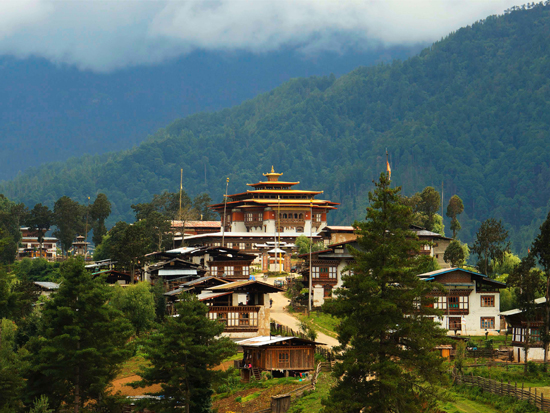
Bumthang-Phobjikha
After Breakfast drive to Phobjikha via Pele la Pass at the altitude of 3,150 meters, a wonderful opportunity for photographs. En-route stops at Chummy village to visit Yathra weaving central. Yathra are made into colourful scarves, bags, blankets and sweater. Continue drive to Phobjikha a bowlshape valley on the western slopes of Black Mountain, visit Gantey Goenpa as it is a major attraction with an old monastery date back to the 16 century. Later walk around the valley which is also the winter home to the rare black-necked cranes, which migrate, from remote parts of Tibet, China and Siberia during winter to this valley. Overnight will be at hotel.
Day 11

Phobjikha-Punakha
After Breakfast drive to Phobjikha via Pele la Pass at the altitude of 3,150 meters, a wonderful opportunity for photographs. En-route stops at Chummy village to visit Yathra weaving central. Yathra are made into colourful scarves, bags, blankets and sweater. Continue drive to Phobjikha a bowlshape valley on the western slopes of Black Mountain, visit Gantey Goenpa as it is a major attraction with an old monastery date back to the 16 century. Later walk around the valley which is also the winter home to the rare black-necked cranes, which migrate, from remote parts of Tibet, China and Siberia during winter to this valley. Overnight will be at hotel.
Day 12
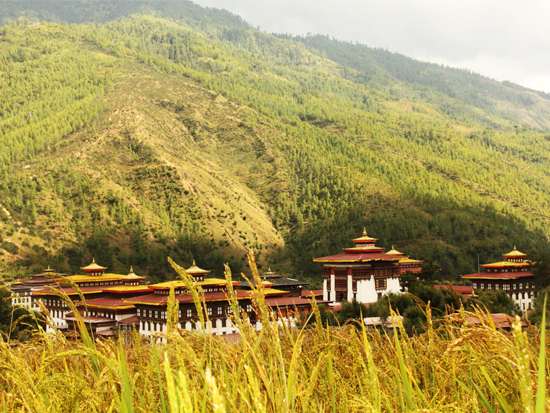
Punakha-Thimphu
After breakfast, drive to Thimphu-approximately 3-hour drive through picturesque valleys and mountain slopes dotted with typical Bhutanese
villages. From the Dochula pass, at over 10,000ft, vast panoramic views of the high snowcapped peaks of the Bhutanese Himalaya can be enjoyed on a clear day.Lunch will be served at Dochula cafeteria. And you even have an opportunity take a picture of Dochula, 108 stupas. Continue drive to Thimphu. Visit memorial chorten. Overnight at hotel.
Day 13
Sightseeing in Thimphu
Memorial Chorten: Built in the year 1974 in the memory of our third king of Bhutan, His Majesty Jigme Dorji Wangchuck.
Buddha Point / Kuensel Phodang: Is the largest Buddha statue in the country, from there you can get a good view of the Thimphu valley.
Motithang Takin Preserve:Houses the rare national animal of Bhutan. Takin is listed by international conservation agencies as a vulnerable species and it is a rare animal found only in Bhutan, Nepal and Burma.
National Institute for Zorig Chusum: Or the school of Arts and crafts is an institute where student undertake a six year course on the 13 traditional arts and crafts of Bhutan.
Traditional Medicine Institute: In Bhutan, equal emphasis is given to both allopathic and traditional medicines. The rich herbal medicines made up from medicinal plants are prepared and dispensed here.
Folk Heritage Museum: The house replicates a traditional farmhouse and is furnished as it would have been about a century ago. Overnight at hotel.
Day 14
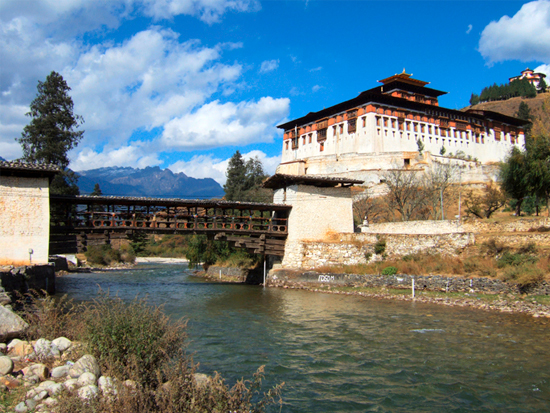
Thimphu-Paro
After early breakfast drive to Paro and check in the hotel. Later drive up the Pa Chu to Drukgyel Dzong, the ruined Fort (destroyed by fire in 1950.) which once defended this valley from the Tibetan invasion. From here one can have the view of sacred Mt. Jhomolhari on clear days. Drive back to visit Ta Dzong former Watch Tower which now houses the National Museum and then visit Rinpung Dzong which houses the monastic school and the office of the civil administration walk down passing close by the Paro Dzong, crossing the Bhutanese typical wooden roofed bridge. Lunch will be served in the hotel. Later in the afternoon walk stroll around Paro town. Overnight at hotel.
Day 15
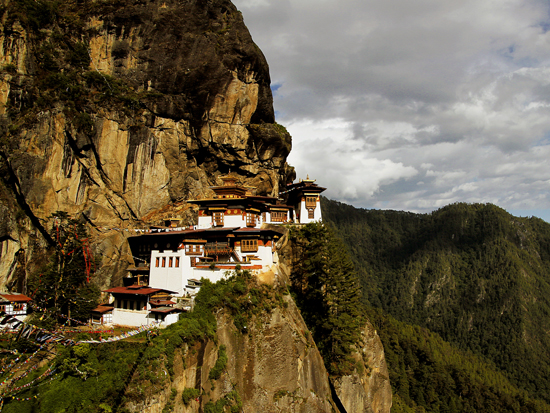
Paro Taktshang
After breakfast, drive for half an hour and start the hike, which is about 5 hours (round trip.) The trail is along an ancient path marked by river powered prayer wheels.
As you reach Taktshang you will be struck by the architectural wonder of this most pious Buddhist shrine in Bhutan. Perched some 1000m, 3000ft on a cliff overlooking the valley, it would justifiably qualify as one of Bhutan’s wonders. Tragically wrecked in a fire early in 1998. It has been rebuilt to its original glory. It is said that the legendary Indian saint, Guru Padma Sambhava, flew from Tibet on the back of a tigress to tame five demons, who were opposing the spread of Buddhism in Bhutan in 746 A.D. Hence the name, Taktshang, or the (Tiger’s Lair)
Descend back to Ramthangka. If the time permits, drive further north to visit another symbolic structure, which is now in ruins. Drugyel Dzong, or Castle
of the Victorious Drukpa, which was also built by the Shabdrung to commemorate Bhutan’s victory over the Tibetans in the 16thcenturies.
From here, the Jomolhari Peak (Mountain of the Goddess) can be seen on a clear day (Alt. 7,329m/24,029ft.). Overnight at hotel.
Day 16
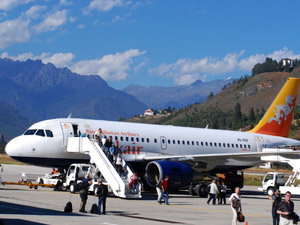
Departure
After breakfast, drive to Paro international airport for your onward flight. The representative of Atlas Tour and Travel will see off and bid farewell.
Details |
|
| START | Samdrup Jongkhar |
| FINISH | Paro |
| DESTINATIONS | Samdrup Jongkhar-Trashigang-Trashiyangtse-Mongar-Lhuentse-Bumthang-Trongsa-Wangdue-Punakha-Thimphu |
| DEPARTURE/RETURN LOCATION | Paro International Airport |
| DEPARTURE TIME | Please arrive at least 2 and 1/2 hours before the flight. |
| WHAT’S INCLUDE |
|
| WHAT’S EXCLUDED |
|
Best Season
Spring (March to May) and autumn (September and October) are the best time for touring and trekking in Bhutan. The months of April and May offer the natural grandeur of rhododendron blooms whereas Bhutan observes its biggest festivals during spring.
Trip Start Dates
We will organize this trip on the dates requested by you. Please Contact Us for your customized departure date.
Additional Information
Our website contains as much information as possible about this trip. However, if you wish to discuss any aspect of this trip or your suitability for it please contact us.
Note: This itinerary is a sample itinerary to give you a general idea of the likely trip schedule. We have designed this itinerary including the best cultural and natural aspects of this country. We can further customize the itinerary to suit your specific interest and needs. Please Talk to Us for more details. Itinerary is subject to flight and hotel availability.
Not really satisfied with this itinerary ? Make your own Customize It!





